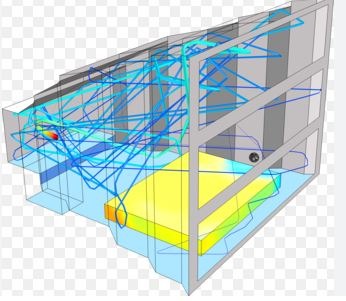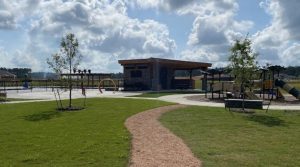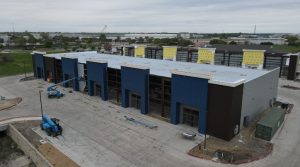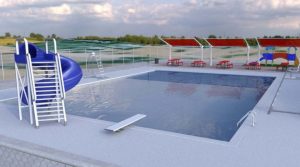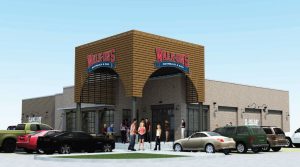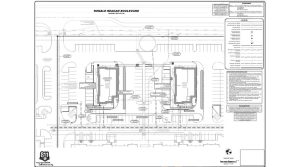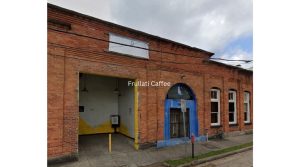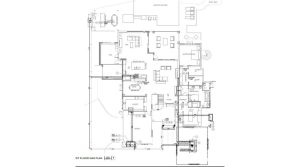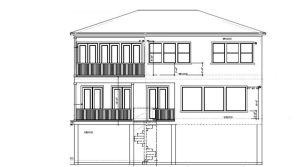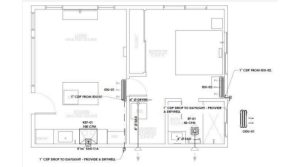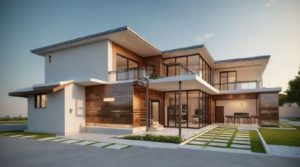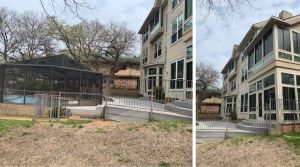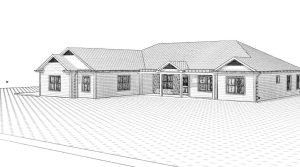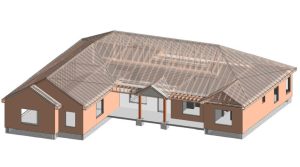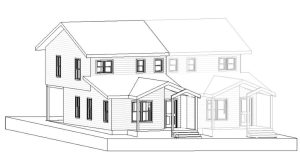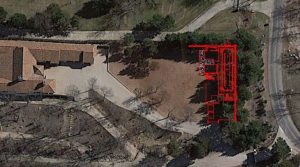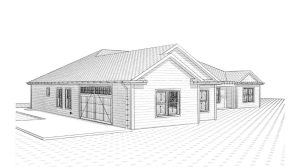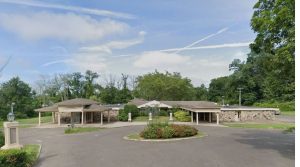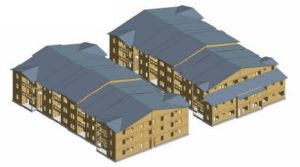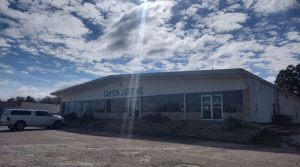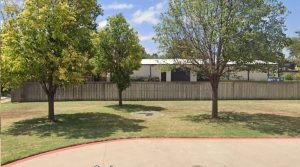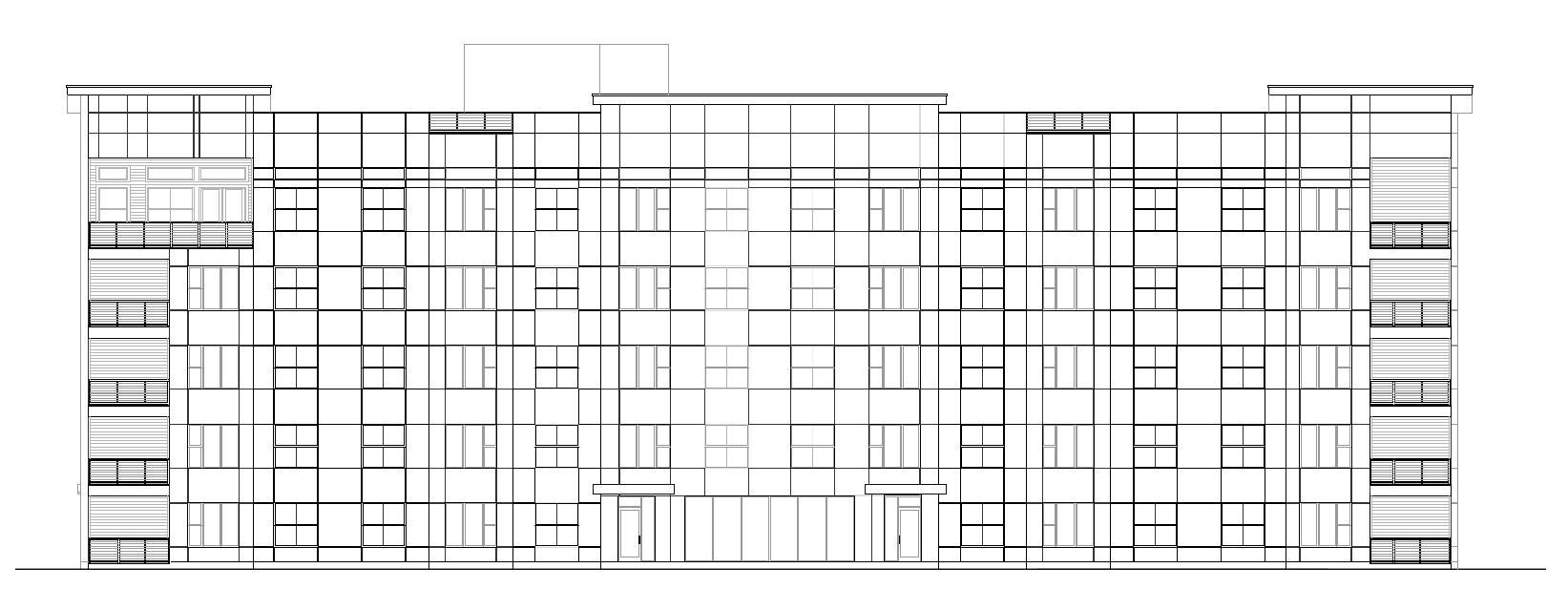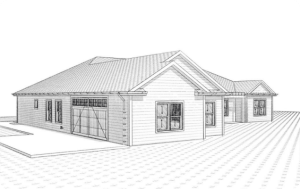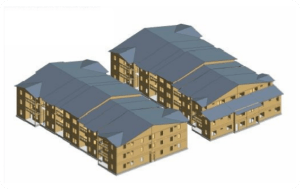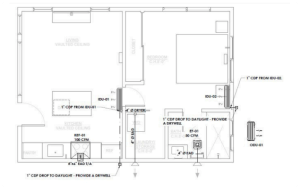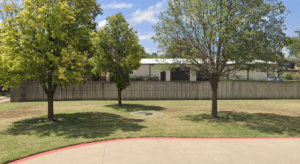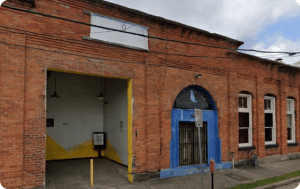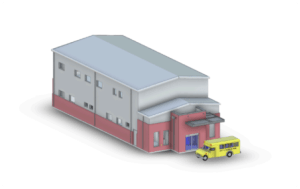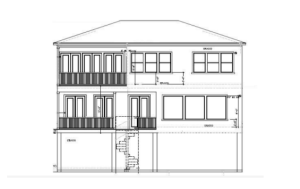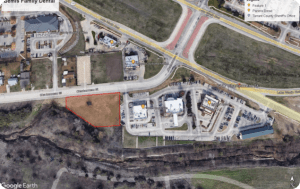Creating Spectacular Outdoor Performance Spaces: Seasonal Structural Design Ideas
Outdoor performance spaces have a unique charm that indoor venues simply cannot replicate. From the open-air atmosphere to the natural surroundings, outdoor performance spaces offer an unmatched experience for both performers and audience members alike. However, designing an outdoor performance space that is functional, safe, and visually stunning can be a challenging task. In this post, we will explore some seasonal structural design ideas that can help you create a spectacular outdoor performance space. From the use of tents and canopies to the incorporation of natural elements and lighting, we will cover everything you need to know to create an outdoor performance space that will leave a lasting impression on your audience. So, whether you are planning a music festival or a theatrical production, read on for some expert tips on creating an unforgettable outdoor performance space.
1. The importance of outdoor performance spaces
Outdoor performance spaces hold immense importance in the world of performing arts. They provide a unique and captivating experience for both performers and audiences alike. The magic of open-air venues lies in their ability to seamlessly blend artistry with nature, creating a harmonious environment that enhances the overall performance. One of the key reasons why outdoor performance spaces are highly sought after is the sense of freedom they offer. Unlike traditional indoor theaters, these spaces allow for unrestricted movement, enabling performers to explore their creativity in a more dynamic and interactive manner. The expansive surroundings provide a natural backdrop that adds an element of authenticity and intrigue to every performance. Additionally, outdoor performance spaces have the power to captivate audiences in a way that indoor venues often struggle to emulate. The open sky above, the gentle breeze, and the sounds of nature all contribute to a truly immersive experience. Whether it’s a theatrical production, a musical concert, or a dance performance, the connection between performers and spectators is heightened, creating an electric atmosphere that can be felt by everyone present. Furthermore, outdoor performance spaces offer versatility and adaptability. They can be transformed to suit different needs, allowing for a wide range of artistic expressions. From intimate settings for small-scale performances to grand stages for large-scale productions, the possibilities are endless. This flexibility enables organizers to curate a diverse program of events, catering to a broader audience and expanding the reach of the performing arts. In a world where technology dominates our lives, outdoor performance spaces serve as a refreshing and revitalizing escape. They encourage people to reconnect with nature and rediscover the beauty of live performances. The experience of watching a play under a starlit sky or listening to music surrounded by lush greenery is unparalleled, leaving a lasting impression on both performers and spectators. In conclusion, outdoor performance spaces hold a special place in the realm of the performing arts. They offer freedom, immersion, versatility, and a connection to nature that cannot be replicated within the confines of indoor venues. By embracing the potential of these spaces, we can create truly spectacular and unforgettable experiences for all who engage with the performing arts.
2. Incorporating nature into your design
When designing outdoor performance spaces, incorporating nature into your design can create a truly spectacular and immersive experience for both performers and audience members. Nature has a way of enhancing the ambiance and adding a touch of enchantment to any outdoor setting. One way to incorporate nature into your design is by using natural elements such as trees, plants, and flowers. Strategically placing trees around the performance area can provide shade, create a sense of intimacy, and add visual interest. Additionally, using plants and flowers can add pops of color and softness to the space, creating a more inviting and harmonious atmosphere. Another way to incorporate nature is by integrating natural materials into the structural design. For example, using wood or stone for seating areas, stage platforms, or walkways can give the space a rustic and organic feel. These materials not only blend seamlessly with the surrounding environment but also evoke a sense of warmth and authenticity. Consider incorporating water features into your design as well. The sound of trickling water from a fountain or a small pond can create a soothing and serene backdrop for performances. Water features also attract wildlife, adding an element of liveliness and natural beauty to the space. Lastly, don’t forget about lighting. Utilize natural light as much as possible, allowing the sun to illuminate the performance area during daytime events. For evening performances, consider installing soft, warm-colored lighting that mimics the glow of the moon and stars. This creates a magical and ethereal atmosphere, enhancing the connection between nature and the performance. By incorporating nature into your outdoor performance space design, you create an environment that seamlessly blends with its surroundings, immersing both performers and audience members in a captivating and unforgettable experience.
3. Aesthetics and functionality: Balancing form and purpose
When it comes to creating spectacular outdoor performance spaces, one must strike the perfect balance between aesthetics and functionality. While the visual appeal of the structure is crucial, it should also serve its intended purpose effectively.
The design of an outdoor performance space should captivate and inspire the audience while providing a seamless experience for performers. This requires careful consideration of the architectural elements, materials used, and overall layout.
Aesthetically, the structure should harmonize with its surroundings and enhance the natural beauty of the outdoor environment. Incorporating elements such as organic shapes, sustainable materials, and landscaping can contribute to a visually appealing and cohesive design. The use of colors, textures, and lighting can further enhance the atmosphere and create a captivating ambiance.
However, aesthetics alone cannot overshadow the functionality of the space. It is imperative to prioritize the needs of performers and ensure that the structure facilitates their performances. This includes considerations such as stage size, acoustics, sightlines, seating arrangements, and backstage facilities. A well-designed outdoor performance space should provide optimal conditions for artists to showcase their talents and engage with the audience.
Finding the right balance between form and purpose requires collaboration between architects, designers, engineers, and performers. Their collective expertise can help create a space that seamlessly integrates both visual appeal and practical functionality. This involves thoughtful planning, thorough research, and iterative design processes to ensure that every aspect is carefully considered and optimized.
Ultimately, a spectacular outdoor performance space is one that not only mesmerizes the audience with its beauty but also provides a conducive environment for artists to deliver unforgettable performances. By achieving the perfect balance between aesthetics and functionality, these spaces can become iconic landmarks that enhance the cultural landscape and bring people together to celebrate the arts.
4. Choosing the right materials for durability and weather resistance
When it comes to creating spectacular outdoor performance spaces, one crucial aspect to consider is choosing the right materials that offer durability and weather resistance. The outdoor environment can be harsh, with exposure to sunlight, rain, wind, and temperature fluctuations. Therefore, selecting materials that can withstand these elements is of utmost importance to ensure the longevity and functionality of your outdoor performance space.
One popular choice for outdoor structures is aluminum. Aluminum is known for its exceptional durability, lightweight nature, and resistance to corrosion. It can withstand exposure to various weather conditions without rusting or deteriorating, making it an ideal material for outdoor performance spaces. Additionally, aluminum can be easily shaped and formed into different structural designs, allowing for versatility in creating unique and visually appealing spaces.
Another material commonly used for outdoor structures is treated wood. Treated wood undergoes a special preservation process that enhances its resistance to rot, decay, and insect damage. This makes it a reliable choice for outdoor performance spaces, especially when it comes to building stages, seating areas, or platforms. Treated wood can withstand the elements while maintaining its structural integrity, providing a sturdy and reliable foundation for performers and audience members alike.
In certain cases, composite materials such as fiberglass-reinforced plastic (FRP) or high-density polyethylene (HDPE) can also be viable options for outdoor performance spaces. These materials offer excellent weather resistance, durability, and low maintenance requirements. They are resistant to fading, warping, cracking, and rotting, making them ideal for long-term use in outdoor environments. Additionally, composite materials can be molded into various shapes and designs, enabling creative freedom in crafting unique and visually striking outdoor performance spaces.
Ultimately, the choice of materials for your outdoor performance space should prioritize durability, weather resistance, and longevity. It is essential to select materials that can withstand the challenges posed by the outdoor environment while maintaining their structural integrity and aesthetic appeal. By carefully considering these factors, you can ensure that your outdoor performance space remains a spectacular and functional venue for years to come.
5. Utilizing natural lighting and acoustics
When designing outdoor performance spaces, utilizing natural lighting and acoustics can greatly enhance the overall experience for both performers and audience members alike. The beauty of an outdoor setting lies in its ability to harness the elements and create a unique atmosphere that cannot be replicated indoors.
Natural lighting can create breathtaking effects, adding an ethereal touch to the performance. Consider positioning the stage in a way that allows for optimal exposure to sunlight during certain times of the day. This can result in stunning visuals, with rays of sunlight filtering through trees or casting dramatic shadows on the stage.
In addition to visual aesthetics, natural lighting has a significant impact on the overall mood and ambiance of the performance. As the sun sets, the lighting can gradually transition from vibrant and energetic to warm and intimate, enhancing the emotional connection between the performers and the audience.
Acoustics play a crucial role in outdoor performance spaces as well. Utilizing the surrounding environment to amplify the sound can create a truly immersive experience. For example, a natural amphitheater with sloping terrain can provide natural sound projection, allowing the music or voices to resonate and reach every corner of the space.
Strategic placement of reflective surfaces, such as large rocks or water features, can also help to enhance the acoustics. These natural elements can act as sound reflectors, ensuring that the music or spoken words reach the audience with clarity and precision.
By harnessing the power of natural lighting and acoustics, outdoor performance spaces can offer a truly spectacular experience. The interplay between nature and artistry creates a unique and immersive environment that captivates audiences and leaves a lasting impression. Whether it’s a concert, theatrical performance, or any other form of artistic expression, incorporating these design ideas will elevate the overall quality and impact of the outdoor performance space.
6. Seasonal considerations: Adapting your performance space to different weather conditions
Adapting your outdoor performance space to different weather conditions is crucial to ensure the comfort and enjoyment of both performers and audience members. Mother Nature can be unpredictable, but with careful planning and thoughtful design, you can create a spectacular outdoor venue that remains functional and safe throughout the seasons.
During the warmer months, providing shade becomes a top priority. Incorporating structures such as awnings, canopies, or large umbrellas can offer relief from the scorching sun and prevent performers and attendees from overheating. Additionally, strategically placed trees or greenery can provide natural shade and create a more pleasant ambiance.
In regions where rain is common, it is essential to have a plan in place to protect the stage and equipment from water damage. Consider installing a sturdy roof or temporary cover that can be easily set up and dismantled as needed. Waterproof materials, such as treated fabrics or specialized roofing, can ensure the longevity of your performance space and prevent any disruptions caused by unexpected showers.
For colder climates, incorporating heating elements into your design is crucial. Portable heaters, radiant heating systems, or even fire pits can provide warmth and create a cozy atmosphere for both performers and audiences. Additionally, considering the layout and orientation of the space can help minimize exposure to chilly winds, ensuring everyone remains comfortable throughout the performance.
In areas prone to extreme weather conditions, such as strong winds or heavy snowfall, it is necessary to consult with experts in structural engineering to ensure the safety and stability of your performance space. Reinforced structures, proper anchoring systems, and regular inspections are vital to withstand the elements and prevent any accidents or damage.
Remember, flexibility is key when adapting your performance space to different weather conditions. Having modular or easily adjustable components can allow for quick modifications based on the prevailing weather conditions. This versatility ensures that your outdoor venue can be enjoyed year-round, providing unforgettable experiences for both performers and audiences alike.
7. Structural design ideas for summer performances
When it comes to creating spectacular outdoor performance spaces for summer events, the structural design plays a crucial role in ensuring a memorable experience for both performers and the audience. Here are some innovative design ideas that can elevate your summer performances to new heights.
1. Open-Air Stage: Embrace the natural beauty of the outdoors by opting for an open-air stage design. This allows performers to connect with the surroundings and creates a sense of freedom and expansiveness. Consider using sturdy materials like weather-resistant wood or durable steel to construct the stage, ensuring it can withstand the elements.
2. Canopy or Shade Structures: As the summer sun can be intense, providing adequate shade for performers and audience members is essential. Install canopy or shade structures strategically to offer relief from the sun’s rays. These structures can be designed to blend seamlessly with the overall aesthetic of the performance space while providing necessary protection.
3. Flexible Seating Options: Opt for flexible seating arrangements that can accommodate different types of performances and audience sizes. Portable seating options, such as folding chairs or modular seating systems, allow for easy reconfiguration based on the event’s requirements. This flexibility ensures optimal sightlines and comfort for spectators.
4. Multi-Level Platforms: Consider incorporating multi-level platforms into your design to add visual interest and depth to the performance space. Varying heights can enhance the overall viewing experience, providing different perspectives for the audience. This design element also allows for creative staging and choreography possibilities, making the performance more dynamic.
5. Lighting and Sound Infrastructure: A well-designed lighting and sound infrastructure is crucial for outdoor performances. Install professional-grade equipment that can withstand outdoor conditions while delivering exceptional audio and visual experiences. Carefully consider the placement of lighting fixtures to enhance the performers’ presence and create a captivating atmosphere.
6. Integration of Natural Elements: Incorporating natural elements into the structural design can further enhance the outdoor performance space. This could include incorporating existing trees, gardens, or bodies of water into the layout. Integrate these elements seamlessly to create a harmonious blend between the performance and the surrounding environment.
By implementing these structural design ideas, you can create a breathtaking outdoor performance space that captivates audiences and provides an unforgettable experience during the summer season. Remember to prioritize safety, durability, and functionality while ensuring that the design complements the artistic vision of the performances.
8. Creating a cozy and inviting atmosphere for fall and winter performances
As the seasons change, it’s important to adapt your outdoor performance space to create a cozy and inviting atmosphere for fall and winter performances. The colder temperatures and shorter daylight hours may pose challenges, but with the right design ideas, you can transform your outdoor space into a spectacular venue that attracts audiences even during the chilliest months.
One way to create a cozy atmosphere is by incorporating warm lighting elements. Stringing fairy lights or hanging lanterns throughout the space can instantly add a touch of warmth and create a magical ambiance. Consider using warm-toned LED lights to create a cozy glow that complements the autumn and winter landscape.
To combat the cold weather, provide ample heating options for both performers and audience members. Portable heaters strategically placed around the seating area can make a significant difference in keeping everyone comfortable. Additionally, consider offering cozy blankets or cushions for spectators to snuggle up in while enjoying the performance.
Fall and winter performances often call for a more intimate setting. Consider investing in temporary structures such as canopies or tents that provide shelter from the elements while creating an intimate space for the audience to gather. Decorating these structures with cozy textiles, such as draped curtains or tapestries, can further enhance the atmosphere and provide a sense of warmth and comfort.
Embrace the seasonal elements by incorporating natural elements into your design. Adorn the performance space with fall foliage, pumpkins, and other festive decorations that evoke the spirit of the season. Not only will this enhance the visual appeal, but it will also create a sense of coziness and seasonal charm.
Finally, don’t forget about the power of hot beverages. Set up a designated area where attendees can purchase or enjoy warm drinks like hot chocolate, mulled cider, or specialty coffees. This not only adds to the cozy ambiance but also provides an additional revenue stream for your event.
By implementing these design ideas, you can create a spectacular outdoor performance space that embraces the beauty of fall and winter while ensuring a cozy and inviting atmosphere for both performers and audience members. So, don’t let the colder months deter you – embrace the season and create unforgettable experiences for all who attend.
9. Springtime design elements: Embracing the beauty of blossoms and greenery
Springtime is a season of renewal and beauty, and incorporating the vibrant colors and fresh foliage into your outdoor performance space can truly create a spectacular atmosphere. By embracing the beauty of blossoms and greenery, you can enhance the overall ambiance and captivate your audience.
One way to incorporate springtime design elements is by using floral arrangements and planters strategically placed throughout the performance area. Imagine the sight of blooming flowers, such as tulips, daffodils, or cherry blossoms, adorning the stage or lining the walkways. These natural bursts of color will instantly create a visually stunning backdrop for your performances.
In addition to flowers, consider integrating lush greenery into the design. Hanging baskets filled with cascading ivy or vibrant ferns can add a touch of elegance and create a sense of enchantment. You can also incorporate potted plants and shrubs strategically to define different areas of the performance space and create a sense of enclosure.
Another creative way to embrace the beauty of blossoms and greenery is by incorporating living walls or vertical gardens. These structures not only provide a stunning visual display, but they also have the added benefits of improving air quality and reducing noise levels. Imagine performing against a backdrop of a lush living wall filled with vibrant blooms and foliage – it is sure to leave a lasting impression on your audience.
Furthermore, consider adding natural elements, such as wooden benches or stone pathways, to further enhance the overall aesthetic of your outdoor performance space. These materials can blend seamlessly with the surrounding greenery and create a harmonious environment.
As you design your outdoor performance space for the spring season, remember to consider the practicality and maintenance requirements of the chosen elements. Ensure that the plants and flowers you select are suitable for the local climate and can thrive throughout the season.
By embracing the beauty of blossoms and greenery, you can transform your outdoor performance space into a truly spectacular and enchanting venue. The vibrant colors, fresh scents, and natural elements will not only captivate your audience but also create a memorable experience that will be cherished for years to come.
10. Maintenance and safety tips for outdoor performance spaces.
When it comes to creating spectacular outdoor performance spaces, it’s not just about the initial design and construction. Ongoing maintenance and ensuring the safety of the space are crucial factors to consider. Here are some essential maintenance and safety tips to keep in mind:
1. Regular Inspections: Conduct regular inspections of the entire performance space, including the stage, seating areas, walkways, and surrounding structures. Look for any signs of wear and tear, structural damage, or potential hazards.
2. Structural Integrity: Ensure that all structures, such as stages, platforms, and canopies, are structurally sound and meet safety standards. Regularly check for any signs of structural weakness, loose bolts, or deteriorating materials, and address them promptly.
3. Lighting and Electrical Systems: Inspect and maintain the lighting and electrical systems regularly. Check for frayed wires, malfunctioning fixtures, or any potential electrical hazards. It’s crucial to have a professional electrician handle any repairs or installations to ensure safety.
4. Weatherproofing: Outdoor performance spaces are exposed to various weather conditions. Implement weatherproofing measures such as sealing or treating wood surfaces, applying waterproof coatings, and ensuring proper drainage to prevent water damage and deterioration.
5. Regular Cleaning: Keep the performance area clean and free from debris. Regularly sweep the stage, seating areas, and walkways to prevent slip and trip hazards. Clear any obstacles that may obstruct emergency exits or impede audience movement.
6. Emergency Exits and Evacuation Plans: Clearly mark emergency exits and ensure they are easily accessible and unobstructed. Develop and communicate evacuation plans to all staff members and performers, ensuring everyone knows the designated meeting points and emergency procedures.
7. Fire Safety: Install appropriate fire safety equipment, including fire extinguishers and smoke detectors, in strategic locations. Regularly check and maintain these devices, and conduct fire safety drills to ensure everyone is familiar with evacuation procedures.
8. Accessibility: Consider accessibility for individuals with disabilities. Ensure that the performance space has accessible ramps, designated seating areas, and accessible restroom facilities to accommodate all audience members.
9. Regular Maintenance Schedule: Develop a maintenance schedule that includes routine tasks such as cleaning, inspections, repairs, and replacements. Assign responsibilities to staff members or hire professionals to handle specific tasks.
10. Stay Up-to-Date with Regulations: Keep abreast of local regulations and safety guidelines for outdoor performance spaces. Regularly review and update your safety protocols to ensure compliance with any changes in regulations.
By implementing these maintenance and safety tips, you can ensure that your outdoor performance space remains in excellent condition, providing a safe and enjoyable experience for performers and audiences alike.
We hope you found our blog post on creating spectacular outdoor performance spaces informative and inspiring. Whether you’re a theater enthusiast, event planner, or simply someone who loves the arts, designing a seasonal outdoor performance space can be a thrilling endeavor. By incorporating the structural design ideas we’ve shared, you can create a space that not only enhances the performance experience but also captivates the audience. From adaptable stages to creative lighting and seating arrangements, the possibilities are endless. So go ahead and let your imagination soar as you bring the magic of theater to the great outdoors.

